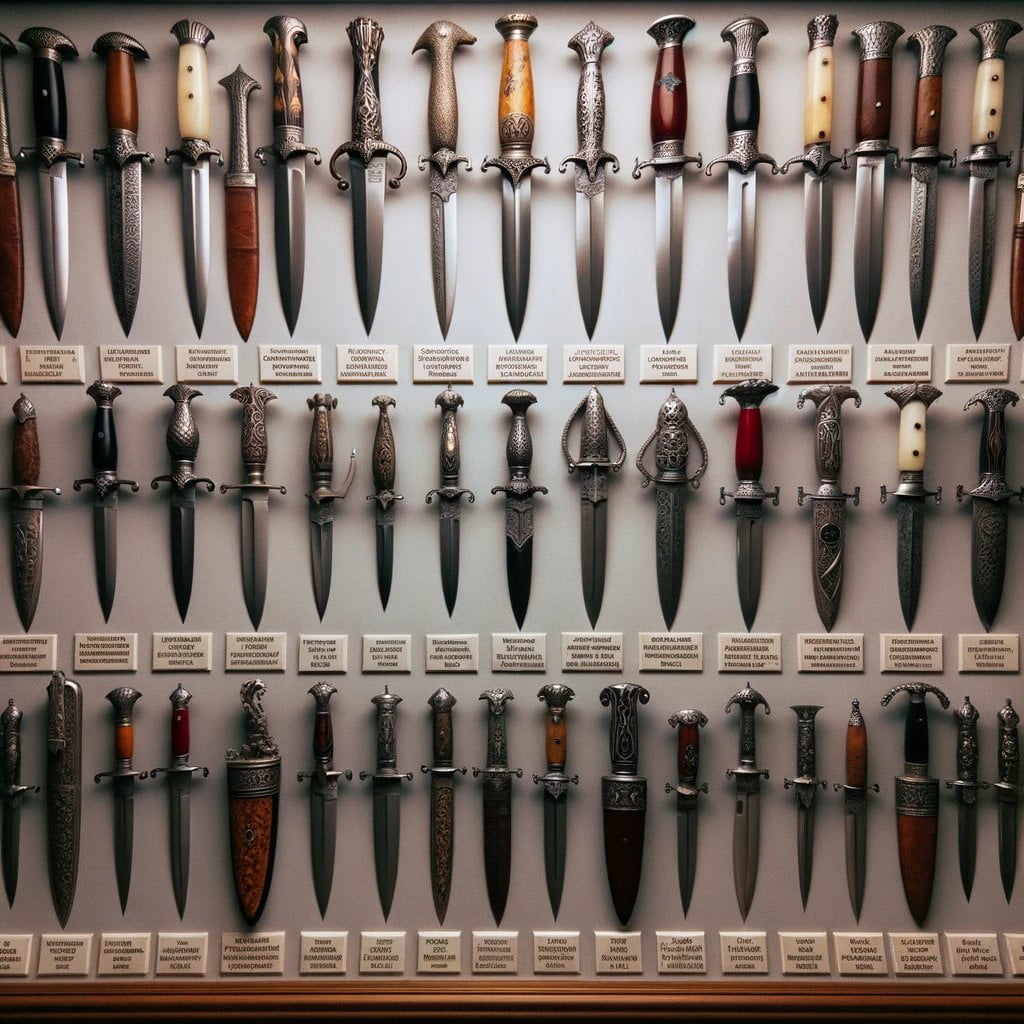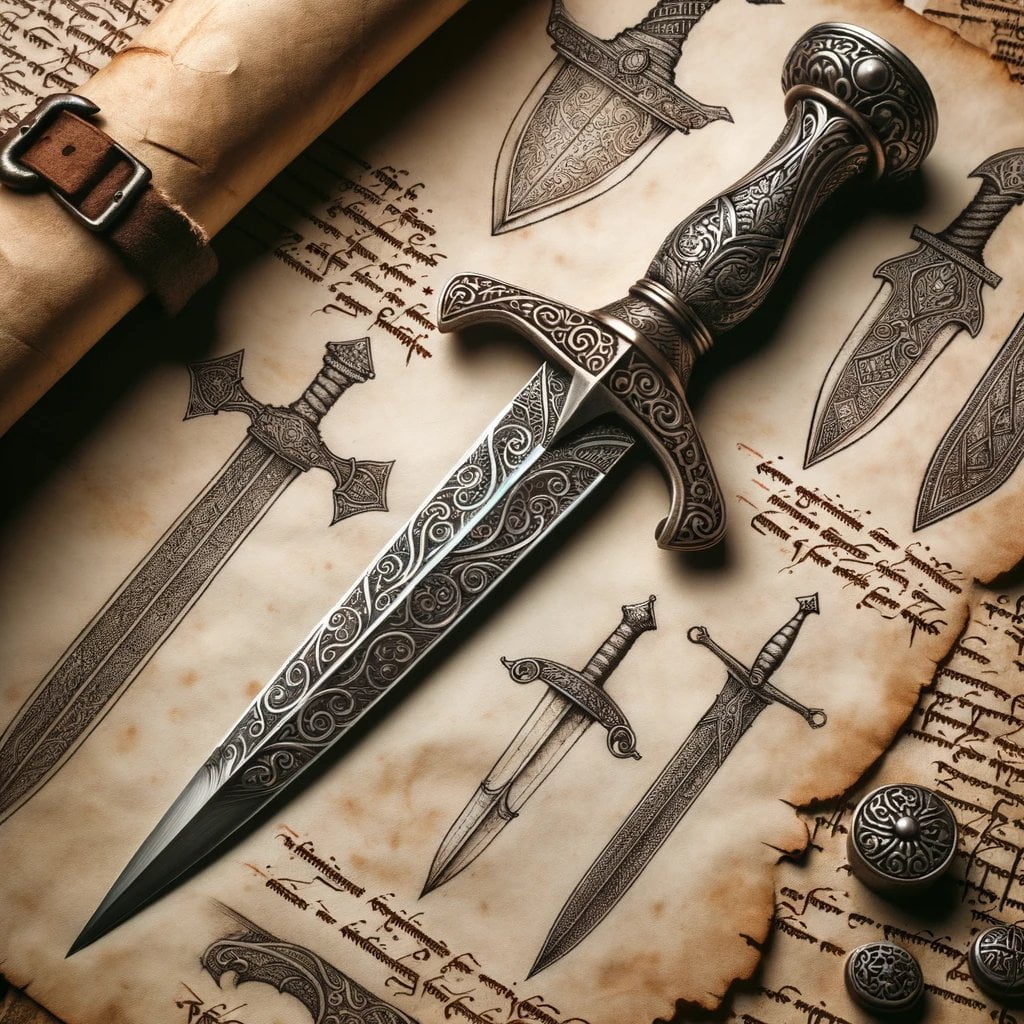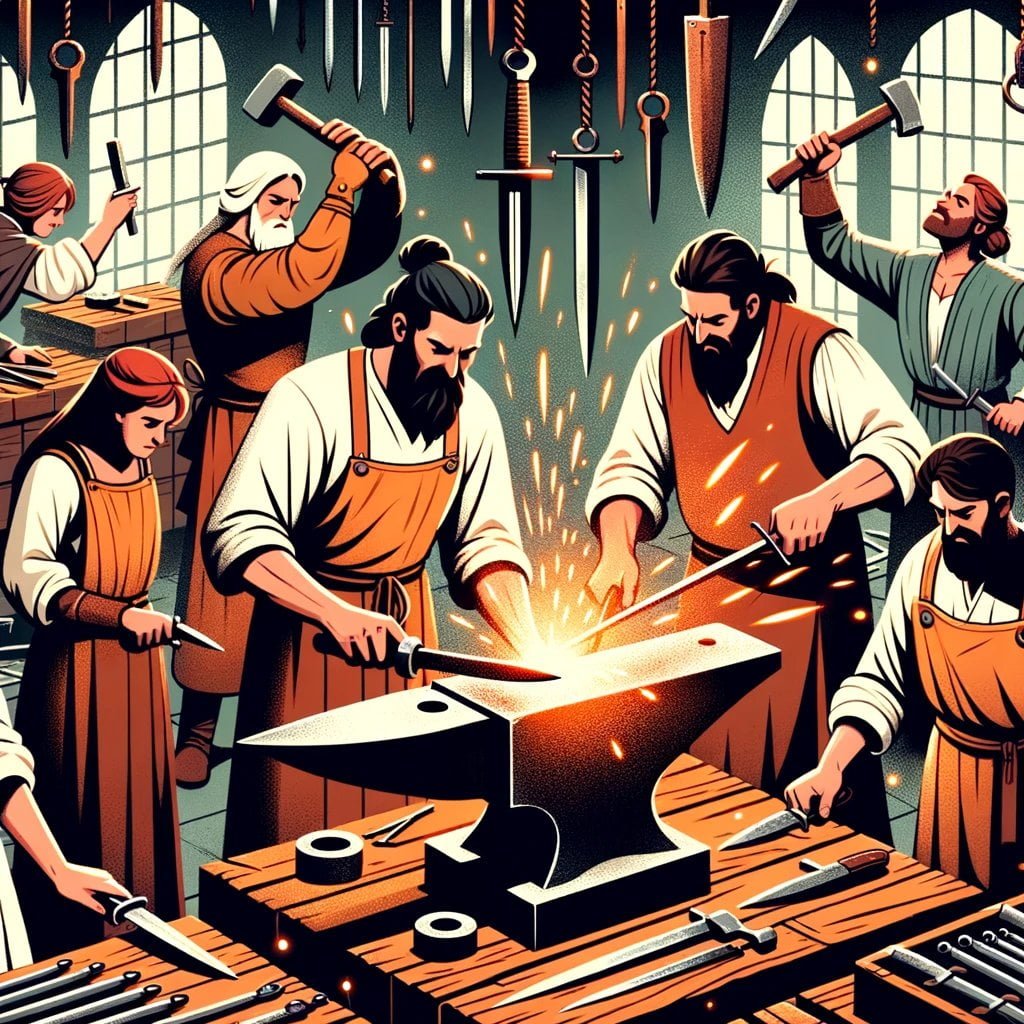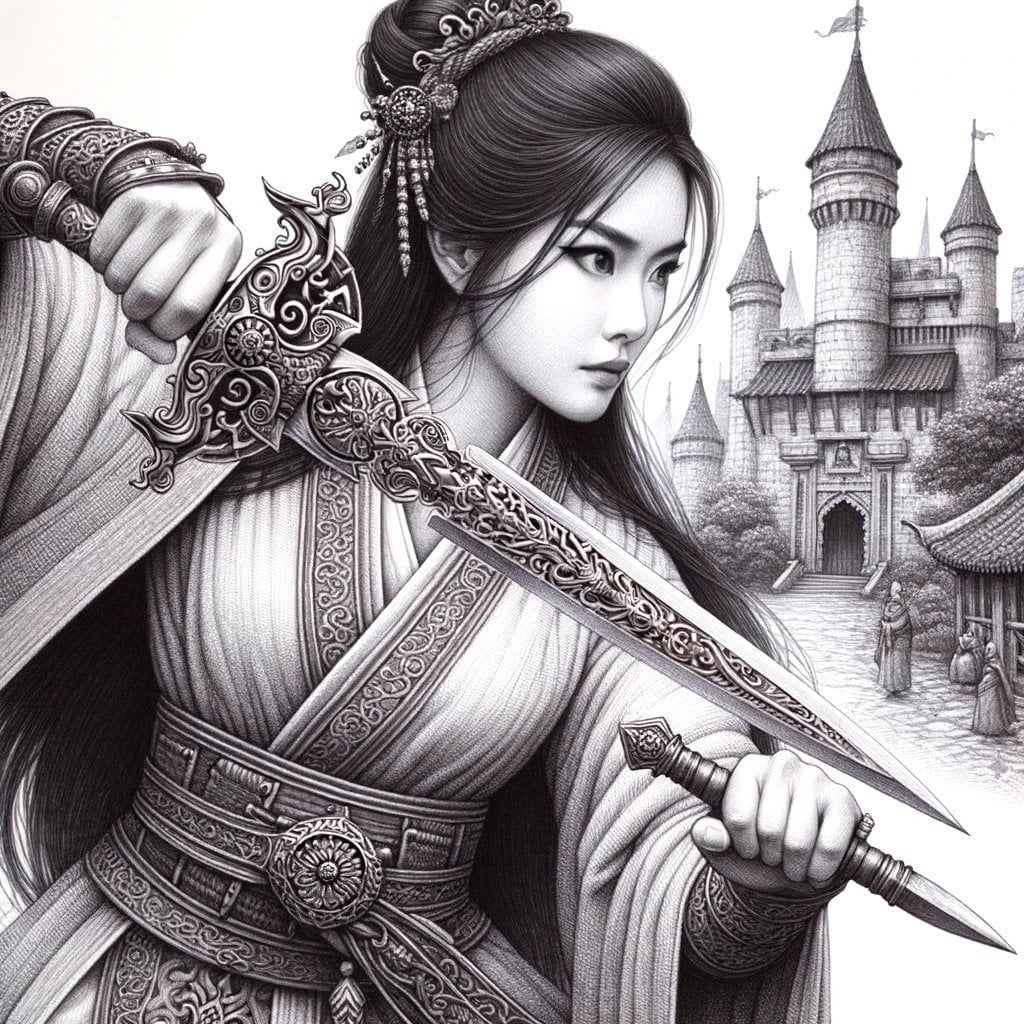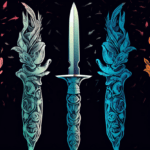Enter the fascinating realm of medieval weaponry. Daggers include history, symbolism, and technical craftsmanship. We will unearth the mysterious design, historical relevance, and Middle Ages uses of these weapons as we investigate them. Explore the medieval dagger’s intriguing history with us.
Medieval dagger facts
Explore medieval weaponry and the dagger’s intriguing tales. This article will take you back in time to explore the mysterious realm of these lethal yet fascinating weapons with fascinating information.
Types of Medieval Daggers
distinct varieties of medieval daggers served distinct purposes. From the anelace to the bollock dagger, rondel to misericorde, poignard to Baselard, each had its own design and use. These daggers have a short, tapered blade with a central spine or fuller and two sharpened cutting edges along the blade.
A Deadly Weapon
Medieval daggers were fierce stabbing weapons due to their sharp edges and pointed tips. Knights admired these swords, while common troops praised their wartime reliability and adaptability. As backup weapons, daggers excelled in close combat.
Beyond the battlefield
Medieval daggers had an impact off the battlefield. These multipurpose instruments were also used daily. Daggers were used for cooking, cutting meat and wood, and making arrows.
The Making of a Dagger
Medieval daggers, made from various materials, highlighted blacksmithing. These magnificent weapons were made from wood, bone, antler, iron, bronze, and steel. In the late Middle Ages, “dagger” replaced hewing knives and seax.
Seeking further knowledge
Discover more medieval dagger facts on the many websites dedicated to this fascinating topic. Castletocastle.com, medievalbritain.com, medievalchronicles.com, and darksword-armory.com give a thorough dive into medieval weaponry where you can learn hidden facts and increase your knowledge.
In medieval armor, daggers were crucial. Wonder what medieval daggers were used for? Personal defense and close combat are the answers. Daggers provided effective fighting protection due to their sharp blades and small stature. Learn about daggers and their importance in medieval warfare. Discover the intriguing history of these lethal weapons and how long medieval daggers were.
For more insights into what a dagger was used for in medieval times, click here.
Unveil the secret behind the purpose of a dagger by clicking here.
Interested in discovering the length of a medieval dagger? Click here to satisfy your curiosity.
Join us in unraveling the mysteries of medieval daggers and delve into the captivating world of weaponry from the past.
Cultural Symbolism
Many cultures value daggers, those lethal but seductive weapons. Power and protection have been part of human history for eons. Let’s explore medieval daggers’ unique cultural symbolism and discover their secrets.
The Power of Life and Death
Daggers symbolized life and death in ancient Rome. They symbolized the razor-thin border between domination and destruction and the fall of empires. Each dagger swing was a powerful display of control. These sharp blades’ cultural connotation touched Romans deeply.
Last Resort Guardians
In the Middle Ages, daggers had a distinct use. It was a last resort in a close battle when all else failed. The presence frightened and confused opponents. The sleek, deadly blade reflected the wielders’ bravery and will.
“In the chaos of battle, when all hope seemed lost, the medieval dagger emerged as the ultimate guardian, a silent yet formidable protector.”
Influence of Culture and Society
Medieval culture, society, and economy shaped dagger design, production, and use. These weapons were styled and varied by place and society. The daggers were useful instruments and exquisite works of cultural expression, thanks to the craftsman who made them.
Hidden Meanings and Rituals
Daggers have long been used in rituals. These weapons have been used in symbolic rituals from ancient times to modern secret societies. Sharpness represents slashing negativity, whereas point represents focused intent and precision. The cultural symbolism of these rites enhances blade mystique.
“In the ethereal realm of rituals, daggers become conduits of ancient wisdom, unlocking the mysteries of the past and imbuing the present with symbolic power.”
Phallic symbolism and cultural shifts
The medieval bollock dagger is distinguished by its male genitalia-shaped blade. The medieval bollock dagger symbolized manly might and vigor. Later generations neglected or dismissed this symbolism as cultural sensibilities changed.
“Time may have dulled the once unmistakable symbolism, but the echoes of power and masculinity still resonate within the silhouette of the bollock dagger.”
Unveiling the Secrets
Medieval daggers are cultural symbols as well as weapons. From portraying life and death to being last-resort guardians, these weapons depict strength and defense. Daggers were utilitarian instruments and cultural artifacts influenced by culture, society, and workmanship. Beyond their sharp edges, secret meanings and ritual contexts revealed past mysteries.
“Within the enigmatic veil of the medieval dagger lies a tapestry of cultural symbolism, awaiting those willing to uncover its secrets.”
When you see a medieval dagger, recognize its cultural significance. Cultural symbolism goes deeper than the blade’s sharpness.
Lola App has developed an intriguing list of the most famous daggers worldwide. This essay takes you on a fascinating journey through history and craftsmanship, from Southeast Asian kris daggers to Middle Eastern Damascus blades. To dive into this captivating collection, click here to explore Lola App’s selection of the most famous daggers.
FAQ
Question 1: What are the different types of medieval daggers?
Answer 1: Throughout the medieval period, various types of daggers were used, including the anelace, bollock dagger, rondel, misericorde, poignard, and baselard. Each type had its own distinguishing features and purposes.
Question 2: How were medieval daggers primarily used?
Answer 2: Medieval daggers were primarily used as stabbing weapons. Known for their sharp edges and pointed ends, they were commonly used as backup weapons or in close combat situations.
Question 3: What materials were medieval daggers made of?
Answer 3: Daggers were made from a variety of materials, such as wood, bone, antler, iron, bronze, and steel. The discovery of new materials like iron and steel influenced the evolution of daggers.
Question 4: Did medieval daggers have any non-combat uses?
Answer 4: Yes, daggers in medieval times served purposes beyond combat. They were used for everyday tasks such as cooking, cutting meat and wood, and making arrows.
Question 5: What cultural significance is associated with medieval daggers?
Answer 5: Daggers hold great cultural significance in various societies around the world, symbolizing power and protection. In ancient Rome, for example, they represented the power of life and death and served as reminders of fallen empires.
- Star Ring Trends: Etsy vs Amazon - March 28, 2025
- Boost Pollinator Habitats: Baby Blue Eyes Sustainable Farming Guide - March 28, 2025
- Protect Big Black Bears: Effective Conservation Strategies - March 28, 2025
